What to do with geraniums after flowering to enjoy future glorious blooms
Once you've enjoyed your geranium blooms you may be left wondering what the next steps are...
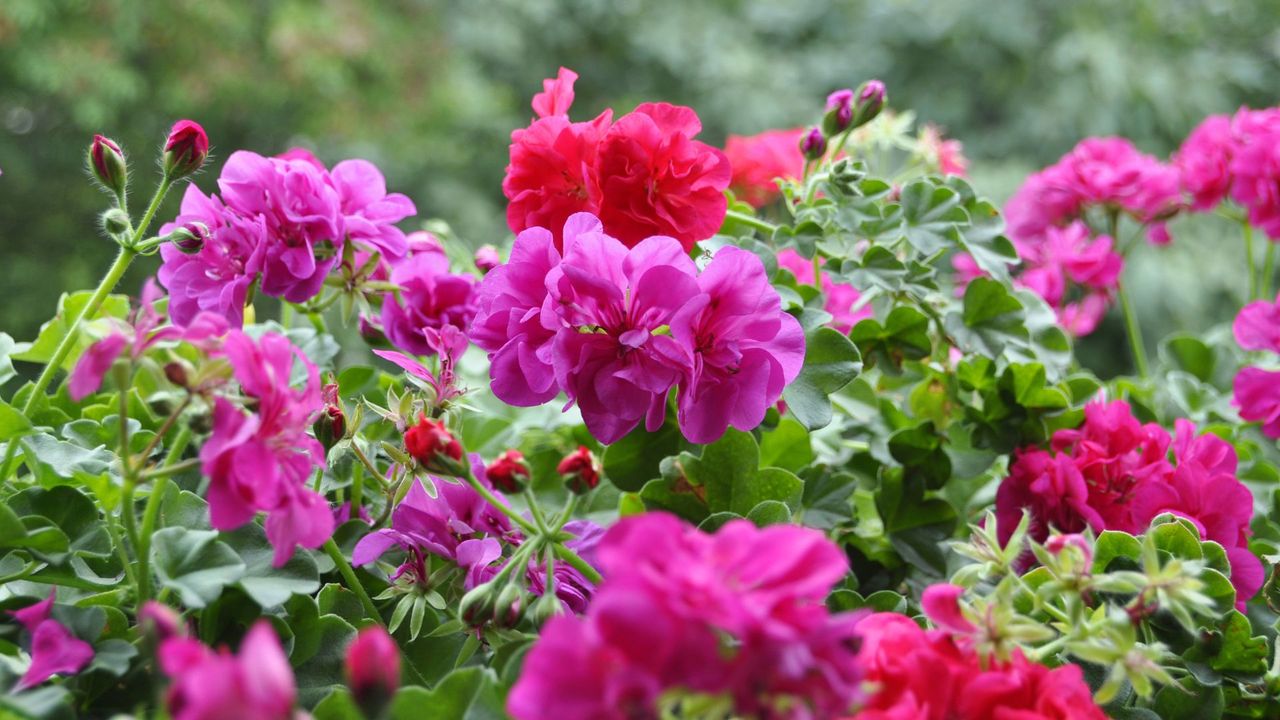

Sometimes with all the enjoyment of blooming flowers, we often forget to think about how to care for our flowers after their peak. What steps should you be taking when your geraniums have flowered to ensure they thrive long-term?
Whatever garden trend you embrace, prolonging the lives of your flowers and their blooms will always be greatly appreciated. Taking certain precautions after your plant has flowered can lead to it flowering again and even returning after winter, like what to do with daffodils after flowering, for instance.
So if you want to get the most out of your geraniums all year round follow these expert recommended steps.
What to do with geraniums after flowering: expert advice
As one of the most alluring plants to liven up your garden, geraniums are extremely common across the UK.
"Geraniums are one of the most popular perennials in Britain’s gardens, and for good reason! These hardy plants are not only low maintenance, but they offer gorgeous bursts of colourful blooms from spring through to autumn," says Charles Carr, head of wholesale nurseries at Hillier Garden Centres.
Once you've witnessed these stunning bursts of colour and the flowers start dimming or wilting, it's important to take extra care of the plant. Because like with what you do with irises after flowering the next steps inform if they flower again.
"Geraniums may be cut to the base of the plant once the blooms begin to fade. By pruning your geranium, you can encourage new growth and sometimes, depending on the variety, a second flush of colour later in the summer," explains Charles.
Sign up for the woman&home newsletter
Sign up to our free daily email for the latest royal and entertainment news, interesting opinion, expert advice on styling and beauty trends, and no-nonsense guides to the health and wellness questions you want answered.
Not only does this help with new growth, but cutting back your geranium can also stop the plant from putting too much energy into seed production and allow it to focus on fresh, healthy regrowth. Charles says, "If young growth is spotted, cut the plant back to just above the fresh shoots."
Burgon & Ball National Trust Dark Wood Bypass Secateurs: £24 at B&Q
These secateurs are made with drop-forged stainless steel for strength and come with bypass action that gives precise clean cuts. The pair also arrives with a 10-year guarantee.
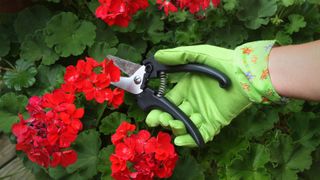
Similar to what you'd do with tulips after flowering, always ensure you use clean, sharp secateurs or pruners so the plant stems are protected and no disease is transmitted.
Jane Dobbs, lead gardener at Allan's Gardeners says, "You can also keep the shape compact and bushy by pruning back leggy or overgrown stems. Cut the stems back by about one-third, just above the leaf node. You'll stimulate new growth and keep the plant tidy."
"It's also important to keep the soil moist, but not soggy. Geraniums prefer soil that drains well, so don't overwater them. You should avoid letting the top of the soil dry out between waterings," she continues.
Jane points out that post-flowering is a good time to check your geraniums for insects and diseases. Look out for aphids, spider mites and fungal diseases as these are the most common problems so use insecticides or fungicides right away.

Gardening is Jane's passion, having built and maintained stunning outdoor spaces for over a decade. Managing all the garden projects at Allan's Gardeners is her responsibility as lead gardener. A wide range of horticultural practices come into play in Jane's work, from landscape design to plant and lawn care.
FAQs
Do you cut back geraniums after they bloom?
Cutting back plants so that they may be able to grow again the next year is one of the best and most effective sustainable garden ideas. Similar to knowing how to deadhead your plants properly, cutting them back after flowering is super beneficial.
"After your geraniums have finished blooming, cut them back close to ground level or roughly one inch above their main stem with a sharp, clean pair of secateurs," says Graham Smith McIhort, a gardening expert from LBS Horticulture.
"The plants should be cut at nodes or new growth points whenever possible, and you should also remove any yellow or brown leaves."

Can you leave geranium plants in the ground all year?
If you're into succession planting and want to ensure your geraniums are fit to blossom again next spring then there are a few steps you'll need to take to protect them from the winter weather.
Graham says, "The majority of geraniums will not survive through winter in the UK, and will need to be overwintered somewhere that is frost-free so that they will live until spring."
The ways you can overwinter them indoors is by taking cuttings, potting individual plants or storing the bare roots plants somewhere cool and dry. He says, "When spring arrives, trim the geraniums and provide them with a liquid feed. They can then be moved back outside once the risk of frost has passed."
One of the keys to having thriving geraniums is choosing the right variety for your garden, explains Charles.
He says, "Choosing the right variety for your garden is key, Geraniums range from tiny ground cover varieties for the front of a border to large sprawling varieties which are excellent for interplanting mid-border. Some thrive in shade such as G.macrorrhizum and others in full sun and can either put one spectacular display such as G. magnificum or repeat flower all summer long such as G.Rozanne."

Emily joined woman&home as a staff writer after finishing her MA in Magazine Journalism from City University in 2023. After writing various health and news content, she now specialises in lifestyle, covering unique cleaning hacks, gardening how-tos, and everything to help your houseplants thrive.
-
 Blush always goes patchy on my dry skin, but this surprising combo is the first to actually stay put
Blush always goes patchy on my dry skin, but this surprising combo is the first to actually stay putFor a natural-looking flush that actually sticks around, this is the formula pairing I swear by - and how to go about finding your own.
By Naomi Jamieson Published
-
 Has watching Adolescence made you determined not to give your child a phone? Expert advice on how to say no
Has watching Adolescence made you determined not to give your child a phone? Expert advice on how to say noWe spoke to parenting writer Tanith Carey about how to navigate this complex issue with your kids
By Kerrie Hughes Published
-
 The best flowering houseplants to welcome a pop of uplifting colour
The best flowering houseplants to welcome a pop of uplifting colourLooking for houseplants with a little more colour? These flowering species are your solution and come in every colour you could want
By Emily Smith Published
-
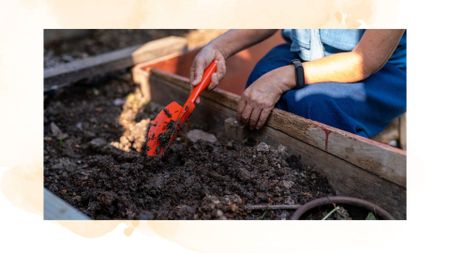 The common composting mistakes you need to avoid if you want to achieve a nutrient-rich heap
The common composting mistakes you need to avoid if you want to achieve a nutrient-rich heapIt turns out composting is not as straightforward as it seems, here are the mistakes you could be making with yours
By Emily Smith Published
-
 8 creative ways to decorate walls without paint: interior designer's budget-friendly tips to refresh rooms this spring
8 creative ways to decorate walls without paint: interior designer's budget-friendly tips to refresh rooms this springThese insider styling tricks will give your walls a new lease of life, at minimal effort and cost
By Katie Sims Published
-
 How to recycle household waste in the garden: 7 sustainable tips to keep your plants thriving for free
How to recycle household waste in the garden: 7 sustainable tips to keep your plants thriving for freeFilling your recycling bin feels great, but did you know there are ways you can use your waste to benefit your garden and plants instead?
By Emily Smith Published
-
 5 things you should remove from your bedroom to create space and serenity, say professional organisers
5 things you should remove from your bedroom to create space and serenity, say professional organisersHome organisers reveal which items you should remove from your bedroom now, for a calmer, more relaxing space
By Katie Sims Published
-
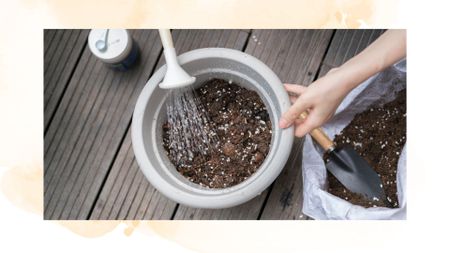 Try this teabag drainage trick on your potted plants to improve water retention and more
Try this teabag drainage trick on your potted plants to improve water retention and moreTired of watching your compost wash away each time you water your plants? This sustainable solution will cut waste and keep your plants happy all at the same time
By Emily Smith Published
-
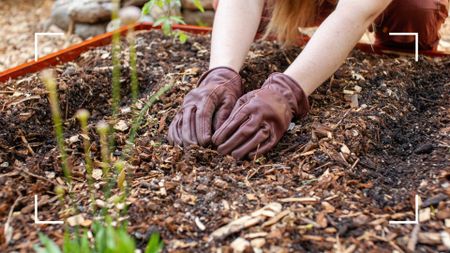 What is mulching and why is it important for gardens at this time of year? Experts reveal all
What is mulching and why is it important for gardens at this time of year? Experts reveal allMulching is the secret to healthier plants, better soil and weed prevention - but what exactly does it consist of?
By Emily Smith Published
-
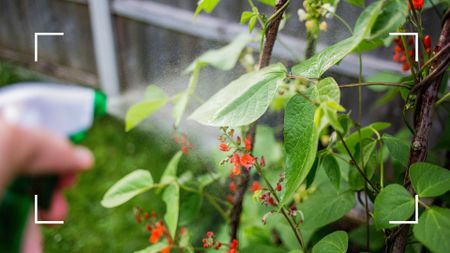 Stop using soapy water on garden pests and try this safe garlic plant spray instead - it's expert-approved
Stop using soapy water on garden pests and try this safe garlic plant spray instead - it's expert-approvedLeave the soapy water for the dishes - this garlic solution spray is the only thing you should be using on plant pests according to this garden expert
By Emily Smith Published
